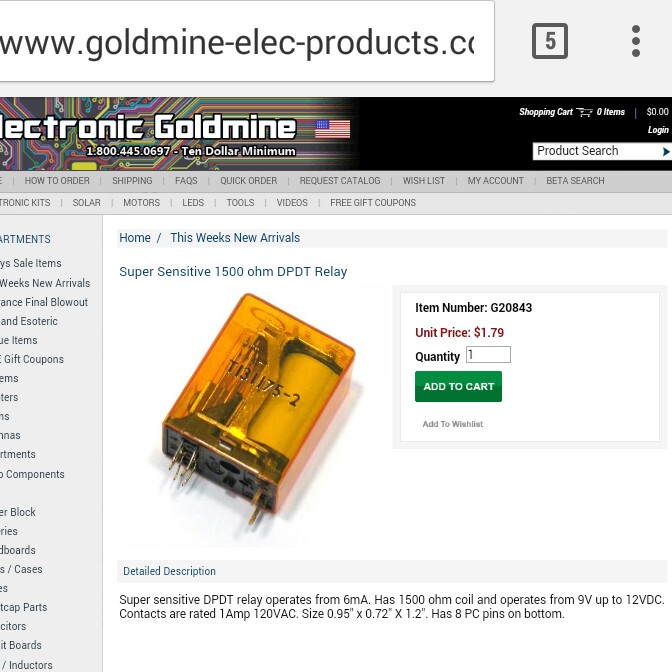I also got several of these relays from goldmine-elec.com. I got them when they were on sale. There are more characters printed on the coil, including the 1500 ohm resistance.
These are standard frame relays, with double pole, double throw contacts (see the pic). The pins are made for insertion into a PC board. The coil is 1500 ohms, and 9 to 12 VDC will operate the contacts. The contacts are rated for 1 amp at 120 VAC. The contacts look heavy duty, so it might be able to handle more.
I connected 12VDC to the coil and it pulled in with a click. With 12 VDC across 1500 ohms, that’s 12/1500 amp coil current, or 8.0 mA. And 8 mA multiplied by 12V is 96 milliwatts. That’s low enough for a Joule Thief with a rectifier and filter capacitor on the output to drive the coil. Then just about any low voltage could pull in the relay. There are other circuits that would benefit from this sensitive relay. With such low current, any transistor can drive the coil. And the relay provides excellent isolation between the contacts and coil, while drawing a minimum of current from the power supply. A typical frame relay draws several times this power.
I had many boards from an old PBX system that used 48 volt relays to connect the phone line when it was in use. These are small relays, taller but not much bigger than a 15 pin DIP IC. They are made by Omron or .
These have a coil resistance of either 5500 or 9000 ohms. The 5500 ohm coil draws 48/5500 amps, or 418 milliwatts when activated. That’s 4 times as much power as the relays from Goldmine.












